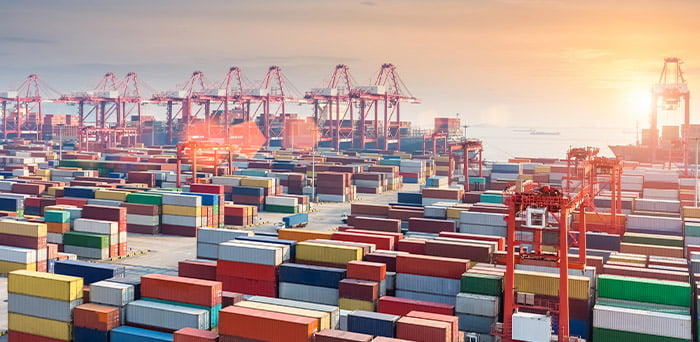
As we know, as of July 1st, 2020, the USMCA came into effect and is opening a great opportunity for companies seeking to produce in and export to North America. This might be one of the most important FTAs Mexico has, but it’s not the only one. Actually, Mexico is one the countries with the most active Free Trade Agreements in the world.
Mexico has a total of 13 FTAs with 50 countries, 32 ARPPIs (Agreement on Reciprocal Promotion and Protection of Investment) with 33 countries, and 9 TPSECs (Treaty of Partial Scope of Economic Complementation) with the Latin American Integration Association (ALADI).
Here is a brief summary of each Free Trade Agreement Mexico has divided in regions.
Mexico and its Free Trade Agreements explained
The USMCA was created to replace NAFTA and bring its ideas to the 21st century. As its predecessor, it virtually eliminates all tariffs and keeps North America duty-free, although new criteria need to be met.
This Free Trade Agreement was mostly focused on the automotive industry and the textile industry , stating the new percentages of locally sourced materials that the final products must have in order to not pay tariffs.
This FTA is an agreement between Mexico, Costa Rica, Nicaragua, El Salvador, Guatemala, and Honduras. It expands trade and investment flows between everyone involved, besides reducing tariffs in goods and services with the requirement of a certificate of origin.
This Free Trade Agreement seeks to diversify exports and encourage mutual trade. It also lays out provisions around rules of origin, e-commerce, financial services, investment, travel rules, amongst others. Furthermore, it covers around 4,000 tariffs.

This deal was created in 2018 to update and replace the EU-Mexico Economic Partnership. Under this FTA , basically 99% of products will eventually be traded between both sides duty-free. The 1% remaining, which includes dairy and meat products, will too become tariff-free in the future.
In the European Free Trade Agreement, Mexico signed a FTA with Iceland, Liechtenstein, Norway, and Switzerland. This agreement covers mostly industrial products, as well as marine products, with the goal of eventually making all trade duty-free.

Previously the TPP (Trans-Pacific Partnership Treaty), the Comprehensive and Progressive Trans-Pacific Partnership (CPTPP) is a Free Trade Agreement between Mexico, Australia, Brunei Darussalam, Chile, Canada, Malaysia, New Zealand, Japan, Singapore, and Vietnam. It eliminates tariffs across all sectors, making 99% of exports duty-free.
This alliance between Mexico, Chile, Colombia, and Peru, commits all parties to promote a better quality of life for their citizens, as well as having an inclusive development, while also seeking to end 90% of tariffs on goods and services traded between all parties. It also prioritizes private sector cooperation by promoting free trade.

The ECA allows for continued free trade in goods and promotes fair competition between both countries. Nevertheless, it does not touch terms related to service trade, government procurement, investment, or intellectual property rights.
This FTA covers 12,017 products which tariffs will be removed in the next 10 years of becoming effective. It includes provisions around trading goods and services, investment, rules of origin, and antidumping.
This FTA removes virtually all tariffs on merchandise, although certain products might follow some rules of origin terms.
This FTA covers tariff-rate quotas, dispute resolution, intellectual property rights protection, anti-dumping and countervailing duties, investment, technical regulations, etc. It also opens Mexico for some Colombian food and agricultural products.
This agreement eliminates virtually all tariffs on manufactured goods, with some exceptions like wool. Automotive goods are covered by a separate economic complementation agreement.

Japan – Mexico Economic Partnership Agreement
This partnership opens trade and investment between both countries. It also removed or reduced custom duties, even on industrial products, while prohibiting performance requirements. It does, however, have a non-custom-duties quota on cars, buses, and trucks sold in Mexico, equivalent to 5%.
Mexico – Israel Free Trade Agreement
With a focus on advancing joint projects in communications, agriculture, infrastructure, and planning services, this FTA aims to increase trade and generate investment opportunities in latter industries.
These were only the Free Trades Agreements without ARPPIs or TPSECs.

Free Trade Agreements can be very beneficial to any economy, not only the Mexican. They contribute to a greater economic activity and deliver opportunities for big and small businesses. They don’t just reduce or remove tariffs. FTAs also encourage investment and improve rules affecting intellectual property, e-commerce, and government procurement.
Having access to such a free market with 50 countries is vital to any company looking to export and save some on the side.Thus, here at VYNMSA we would like to assist you in settling in Mexico.
We are one of the leading industrial real estate developers in Mexico.
Contact us and set shop in Mexico with VYNMSA and get the most out of the 13 Free Trade Agreements this country has.
info@vynmsa.com | Cellphone: (+52) 81 22 02 85 99